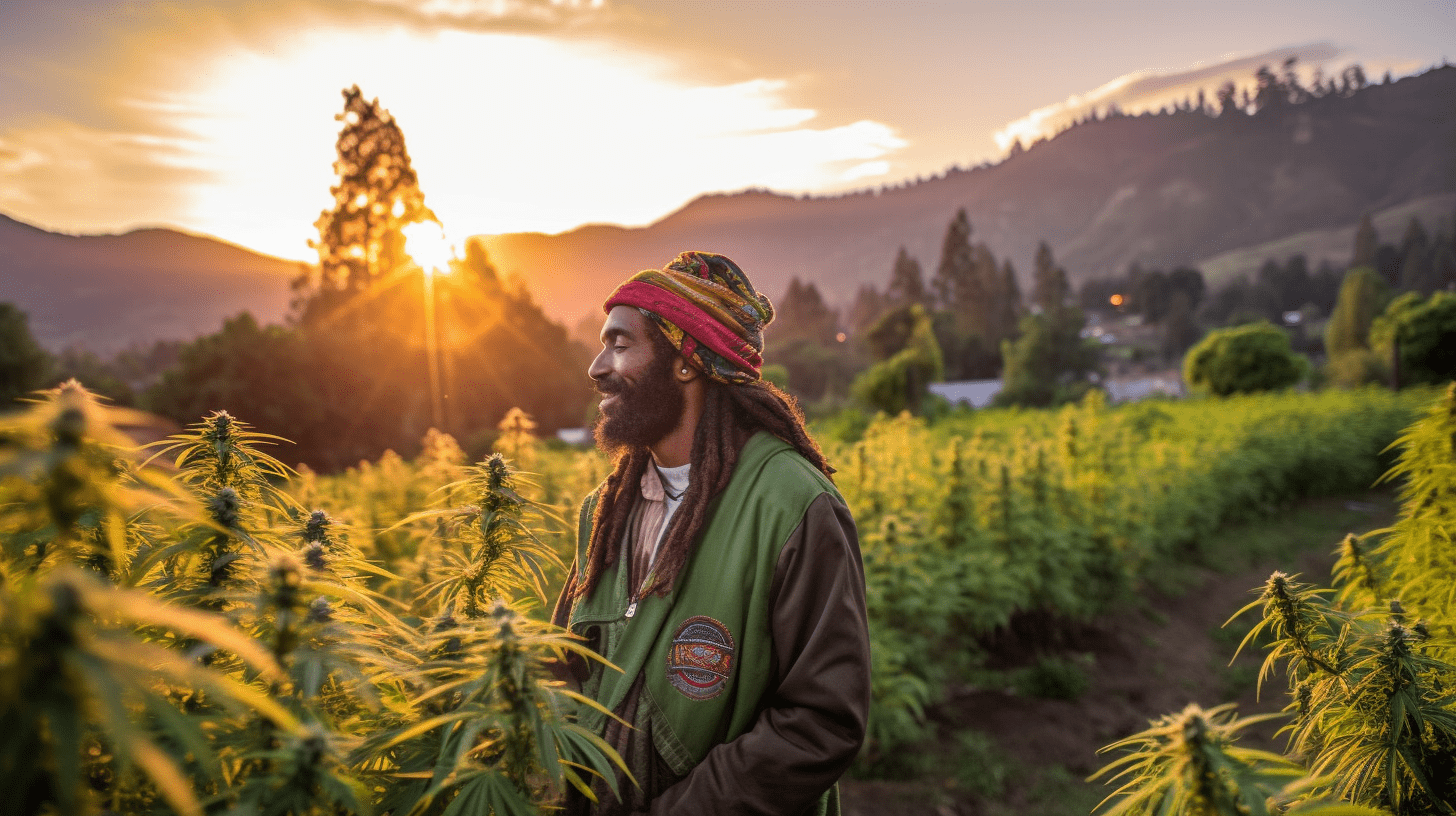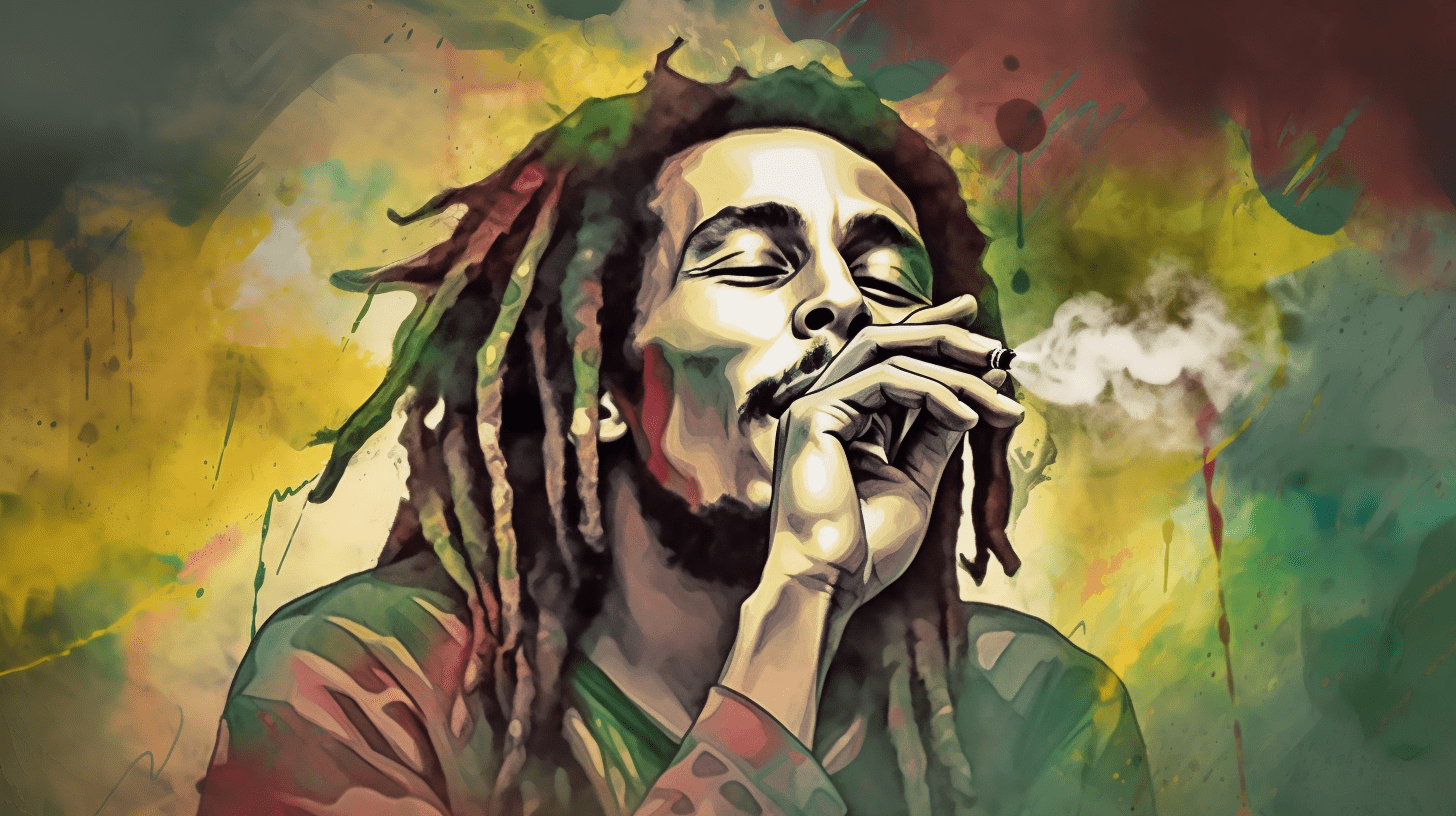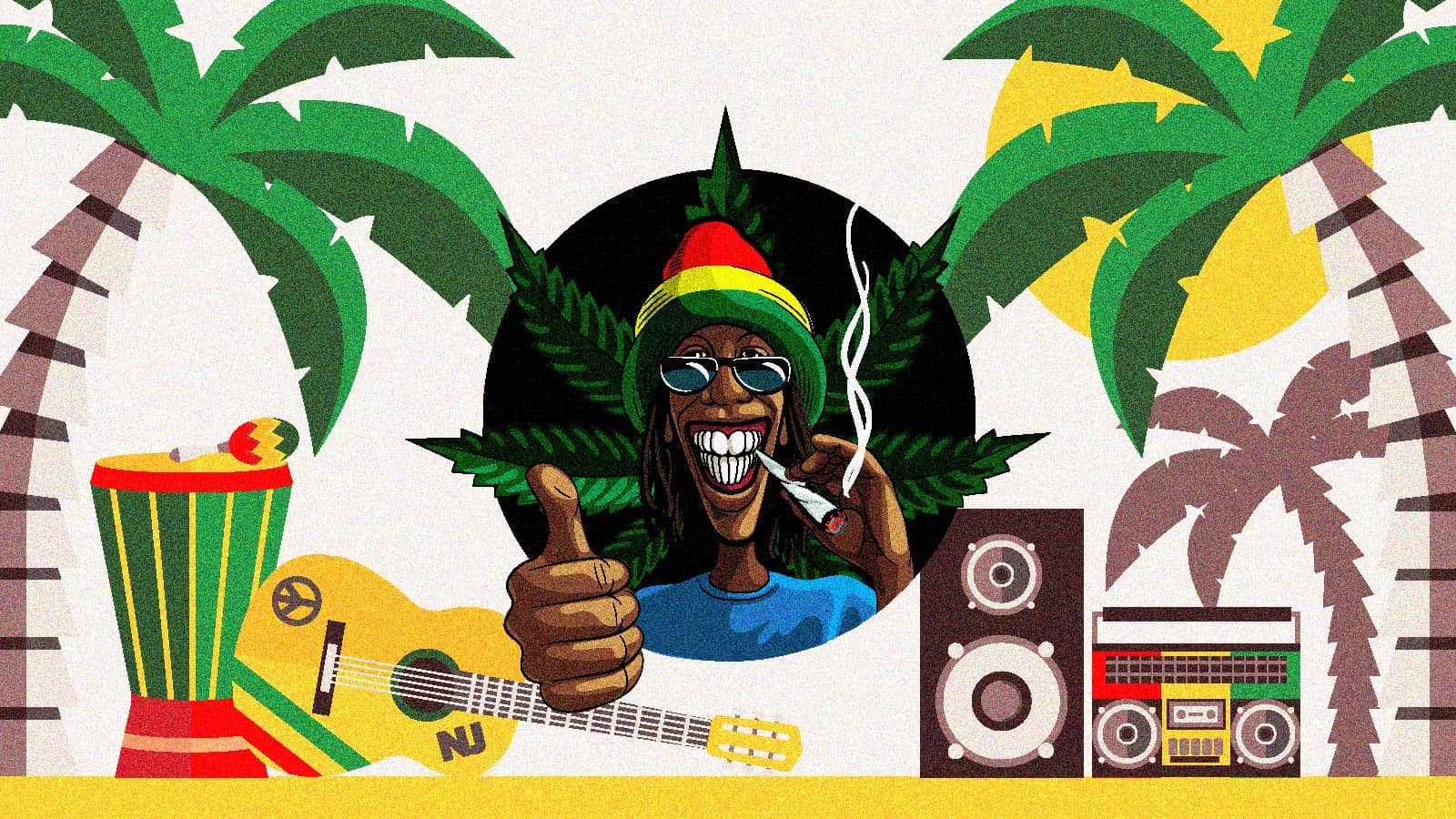The Rastafari movement, often associated with the iconic Bob Marley, is a spiritual and cultural movement that originated in Jamaica in the 1930s. However, it would be incorrect to attribute the start of the trend solely to Marley. The movement’s roots can be traced back to the teachings of Marcus Garvey, a Jamaican political leader and proponent of Pan-Africanism, who called for the unification of African people worldwide.
The Rastafari movement was further developed by Leonard Howell, a preacher who proclaimed Ethiopian Emperor Haile Selassie I as the returned messiah and the divine figure for black people. Many of us might associate weed with this movement, but how do rastafarianism and cannabis connect?

Rastafarianism’s Connection with Cannabis
Cannabis has long been a part of Rastafarianism and holds great significance in the religion. The use of cannabis in Rastafarianism has its roots in the Indian traditions of using the plant for religious and medicinal purposes, which was introduced to Jamaica through indentured Indian laborers during the British colonial era. The Rastafari community adopted and incorporated the spiritual use of cannabis into their practices and beliefs.
The Ritualistic Use of Cannabis in Rastafarianism
In Rastafarianism, cannabis, or “ganja,” as it is commonly called, is consumed during religious ceremonies and gatherings known as “reasoning sessions.” These sessions involve group discussions and meditation, with participants using cannabis to aid in achieving a heightened state of consciousness, promoting introspection, and fostering a sense of unity.
It is believed that the use of cannabis can bring individuals closer to Jah (God) and facilitate communication with the divine. It is important to note that, in Rastafarianism, the use of cannabis is not for recreational purposes but rather for spiritual growth and enlightenment.
Key Tenets of Rastafarianism
As a spiritual and cultural movement, Rastafarianism encompasses a diverse array of beliefs and practices that define its essence and guide the lives of its adherents. Let’s delve into the key tenets of Rastafarianism, shedding light on the core principles that have shaped the movement since its inception in the 1930s. From the belief in the divinity of Haile Selassie I to the emphasis on Pan-Africanism and natural living, these foundational tenets provide a unique insight into the rich tapestry of Rastafarian thought and lifestyle.
Belief in the Divinity of Haile Selassie I
At the core of Rastafarianism is the belief in the divinity of Ethiopian Emperor Haile Selassie I, who is considered to be a direct descendant of King Solomon and the Queen of Sheba. Rastafarians view Selassie as the returned messiah and the embodiment of God, referred to as Jah.
Pan-Africanism and Repatriation
The Rastafari movement is strongly influenced by Pan-African ideology and the teachings of Marcus Garvey. Rastafarians call for the unification of African people worldwide and their repatriation to Africa, which they consider their ancestral homeland. They view Jamaica and other Caribbean nations as “Babylon,” a place of oppression and suffering, and believe that returning to Africa will lead to their spiritual and physical liberation.
Ital Lifestyle and Diet
Rastafarians follow an “Ital” lifestyle, which emphasizes natural and holistic living. This includes adhering to a plant-based diet, avoiding processed foods, and abstaining from alcohol and other substances deemed harmful to the body and spirit. The Ital diet is designed to promote overall health and spiritual purity, aligning with Rastafarian values and their connection to nature.
Dreadlocks and Symbolism
Dreadlocks are an integral aspect of Rastafarian identity and spirituality. They are believed to symbolize the Lion of Judah, a representation of Haile Selassie I, and are seen as a way to connect with the divine. Dreadlocks also serve as a physical manifestation of the Rastafarian commitment to natural living and rejection of societal norms imposed by “Babylon.”

Rastafarianism, Bob Marley, and Cultural Influence
While it is true that Bob Marley played a significant role in popularizing Rastafarianism and its association with cannabis, he did not start the trend. As previously mentioned, the Rastafari movement began in the 1930s, long before Marley’s rise to fame. However, through his music and advocacy, Marley brought global attention to the Rastafari movement and its beliefs, contributing to its growth and influence.
Marley’s songs often touched on themes related to Rastafarianism, such as social justice, African unity, and resistance against oppression. His music resonated with people around the world, spreading the message of Rastafarianism and helping to shape the cultural and spiritual landscape of the late 20th century.

The Impact of Rastafarianism and Cannabis on Jamaica
The Rastafari movement has had a profound impact on Jamaica’s cultural, social, and political landscape. As the birthplace of Rastafarianism, the island has become synonymous with the movement and its key elements, such as cannabis, reggae music, and dreadlocks – symbolic of the stoner stereotype.
Cannabis Legalization and Rastafarianism
While the consumption of cannabis is an essential part of Rastafarian religious practices, its use has been a contentious issue in Jamaica for many years. However, recent changes in the country’s drug policy have led to the decriminalization of small amounts of cannabis for personal use and the recognition of its religious significance for Rastafarians. This shift in policy has further legitimized the role of cannabis in Rastafarianism and contributed to the ongoing conversation about the plant’s broader cultural, medicinal, and economic significance.
The Global Influence of Rastafarianism and Reggae Music
Rastafarianism has left an indelible mark on Jamaica’s cultural identity and has helped shape the global perception of the island. The international success of reggae artists like Bob Marley, Peter Tosh, and Burning Spear has brought the Rastafari movement and its association with cannabis to the forefront of popular culture. As a result, Jamaica has become a symbol of resistance, unity, and spirituality for people around the world.
Moreover, the influence of Rastafarianism extends beyond music and into various aspects of art, fashion, and lifestyle. Elements of Rastafarian culture, such as the iconic red, green, and gold colors, have been embraced by global audiences and can be seen in clothing, accessories, and various forms of artistic expression.
Final Thoughts
Rastafarianism and its association with cannabis have deep historical and cultural roots. The movement, which began in Jamaica in the 1930s, has had a significant impact on the island’s identity and has resonated with people worldwide. The ritualistic use of cannabis within Rastafarianism serves as a means of spiritual growth and connection with the divine, reflecting the religion’s core tenets and commitment to natural living.
By exploring the history, beliefs, and cultural significance of Rastafarianism, it becomes clear that the movement and its connection to cannabis are much more complex than simply being a trend started by a single individual. Instead, Rastafarianism represents a rich tapestry of spiritual and cultural elements that continue to inspire and influence people around the globe.


![[NJ] The Easiest Ways to Buy Weed in Buffalo A Full Guide (5)](https://neonjoint.com/wp-content/uploads/NJ-The-Easiest-Ways-to-Buy-Weed-in-Buffalo-A-Full-Guide-5-768x432.jpg)


